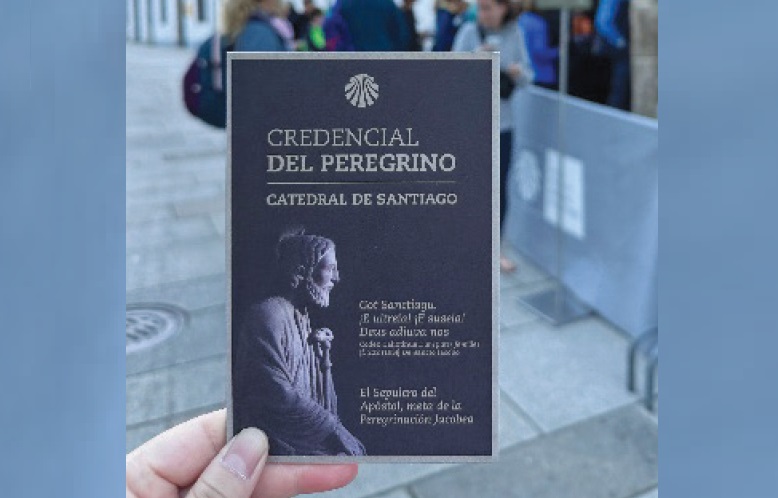Care to attempt an ancient pilgrim’s journey?
Make us strong in faith and happy in hope on our pilgrim journey, following the path of Christian life, and sustain us so that we may finally reach the glory of God the Father. Amen. I wish you all ¡Buen Camino!
May 10, 2024

Getting Sidetracked- Agnes Ong
“Maybe God is trying to tell you something. Like, give up?” Giuseppe, my ex-boss, jokingly asked.
I fiddled with my glass of water. We had cleared our breakfast and settled into a cosy chat in Giuseppe’s warm kitchen in Brussels. I had just shared with Giuseppe about my disappointment at failing my second attempt at the Camino de Santiago.
Barely three hours of walking out of Sarria, Spain, where I began my pilgrimage, my previously injured lower leg muscle acted up. The pain was so excruciating that I limped to the nearest wayside coffee stand to ask the owner to help me call for a taxi to take me to my next stop.
Likewise, my first attempt at the Camino de Santiago eight years prior had ended prematurely in an emergency room of a local medical centre near Portomarin early on my second day of walking after I twisted my ankle when I slipped and fell on the gravel path the day before.
The Camino de Santiago
Legends abound about the origins of the Camino de Santiago or the Way of St James, a route so famous that UNESCO has recognised a few of its many routes, the Camino Frances (French route) and Routes of Northern Spain (Primitive, Coastal, Interior of the Basque Country-La Rioja, and Liébana), and the end-ofthe- pilgrim’s journey, Santiago de Compostela Old Town, as being of “Outstanding Universal Value” in 1993 and 1985, respectively.
One of the legends states that St James the Greater, son of Zebedee, returned to Jerusalem from Hispania, where he was evangelising, to attend to the Virgin Mary. When he was in Jerusalem, he was arrested for preaching Christianity and ordered to be tortured and beheaded by Herod Agrippa I, the King of Judea.
His disciples, Theodore and Athanasius, stole his body and smuggled it into Hispania, where he had last carried out his evangelisation. The boat they were on landed in Cape Finisterra. While crossing the Libredón forest, the animals transporting the body refused to move further. Thus, St James was laid to rest there.
Later, in one ninth-century record, a hermit who lived in the old town of today’s Santiago de Compostela saw lights floating in a nearby forest one night and sent for the local bishop. Upon investigation, they found three tombs – one of St James and his two faithful disciples, Theodore and Athanasius.
The rest, as they say, is history.
It was on that same site that the ninth-century King Alfonso II, a pilgrim of the Camino de Santiago himself, built a chapel over the sepulchre in Compostela. King Alfonso III later expanded this and, over the centuries, the modest building evolved to be the grand Cathedral of Santiago de Compostela today. In medieval Christendom, the city of Compostela, where St James’ tomb is purported to have been located, was so significant that it rivalled both Rome and Jerusalem.
Walking the Camino
This ancient pilgrim’s journey has existed for over a thousand years and has seen its fair share of pilgrims through the ages. These include King Alfonso II, who built the first chapel over the tombs, to the Catholic monarchs of Ferdinand of Aragon and Isabella of Castille in 1486, and St Francis of Assisi.
In contemporary times, Pope John Paul II, Angela Merkel, Stephen Hawking, and celebrities Shirley Maclaine and Martin Sheen are among those who have completed the Camino.
Embarking on the Camino de Santiago pilgrimage is a journey open to all, regardless of your starting point or personal motivations. The only requirement is that you carry the Pilgrim’s Credencial or accreditation, which you can obtain from either the Pilgrim’s Office in Santiago de Compostela or authorised institutions. This document is crucial as it validates the progress of your journey through stamps, documenting where you’ve visited, dined, and stayed. Today, there is also a digital credential app available.
At every stop along the way, try to make it a point to attend a Mass at the local parish, which is typically held between 5.00pm and 7.00pm (check the local listing). Attending these Masses will re-affirm your steadfastness in completing the Camino.
Just as there are many routes leading to the Cathedral of Santiago de Compostela, where the Shrine of St James is, there are various ways one can complete the Camino journey in the Christian spirit of devotionis affect, voti vel pietatis causa (motivated by devotion, vote or mercy). If you opt for walking or riding on horseback, you must complete at least the last 100km. Alternatively, you can cycle the 200km to the Cathedral.
Depending on your budget and comfort level, you can go for an on-ground tour package where all your needs, including a proper visual map and itinerary, luggage transfers, dining options, and comfortable accommodations, are met. For the budget-conscious, you can opt to stay at either the private or city-owned albergues (dorms) and dine simply on takeouts or grocery store selections and follow the scallop shell or yellow arrow Camino signs.
Cathedral of Santiago de Compostela
When you finally arrive at the Cathedral of Santiago de Compostela as a pilgrim, do participate at the high noon Mass for pilgrims where the grand spectacle of the Botafumeira is swung at the end of the Mass. It is typically packed, so it is best to be there at least 45 minutes before Mass begins. After Mass, visit the relics of St James and his disciples situated below the Main Altar, and say this prayer to St James:
St James, Apostle, chosen among the first, you were the first to drink the cup of the Master and you are the great protector of pilgrims. Make us strong in faith and happy in hope on our pilgrim journey, following the path of Christian life, and sustain us so that we may finally reach the glory of God the Father. Amen. I wish you all ¡Buen Camino!
For more information, please refer to The Official Website of the Pilgrim’s Reception Office in Santiago de Compostela at
https://oficinadelperegrino.com/en/ or scan the QR code. 
(Agnes Ong is a self-professed curious traveller and lifelong learner with a lamentable tendency to get into sidetracked experiences. She aspires to explore as many historical UNESCO sites as possible, funds permitting. Agnes has a travel-slash-work-slash-dump everything IG at @agnes_gets_sidetracked)







Total Comments:0